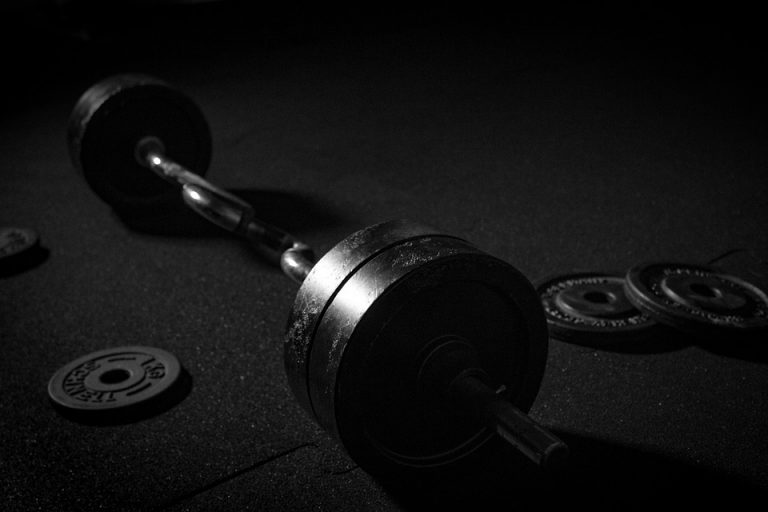I’ve noticed that adjusting training volume is quite a common problem. I often receive mails with the questions about the appropriateness of a given training plan. The most frequent mistake is improper training volume, not only on one training session, but also in the whole week perspective. From my own experience I can tell that improperly adjusted volume, usually too high, is the most common cause of plateau. But the problem is not only too high or too low training volume, but also wrong proportions in the volume for certain muscle parts. Certainly it is directly related to post-training regeneration. Excessive dose of exercises negatively influences not only the development of single muscle parts, but also cooperating muscles or even antagonist muscles, even if they are trained properly.
What actually is training volume?
Training volume in the simplest words is the amount of work you perform during training. The units of this work may be reps or kilograms. For the exercises with your own body weight the situation is the following:
Training volume = the number of series x the number of reps
The volume in this case will be therefore expressed in the total number of repetitions. If we then make 3 series of 10 reps, our training volume will be 3 x 10 = 30 repetitions.
For the exercises with external weight, the total should be multiplied by the weight:
Training volume = the number of series x the number of reps x weight in kg
Therefore, the volume is expressed in kilograms. In other words, if we perform 3 sets of 10 repetitions each with the weight 25 kg, the volume of this exercise will amount to 3 x 10 x 25 = 750 kg.
The volume of the exercises with your own body weight may also be expressed in kilograms, but it is justified only in certain cases, mainly for the comparison between two people with different body mass. For example, when one person pulls up max. 10 times with body weight 80 kg, the volume should be calculated in this way: 10 x 80 = 800 kg. The same number of pull-ups for the person weighing 90 kg will be 900 kg, because even though the score is the same, we may assume that this person is stronger, as he or she performed the same exercise with higher volume, i.e. the same number of reps, but with higher body mass.
When planning your own training based on calisthenics, there is no point calculating the volume in kilograms, as your body mass is constant. It will therefore change nothing. It is therefore worth multiplying the number of series by the number of repetitions.
How is it important for you?
Numbers alone tell nothing. Are 3 series of 10 reps with the weight of 50 kg a lot? Depends on the person. For someone who lifts 150 kg in this exercise without any problem it is really little. Are 3 series of 20 reps of push-ups a lot? And here we won’t tell until we find out how many push-ups this person may perform maximally. Therefore, training volume should be considered individually.
Knowing your own possibilities, you may therefore determine appropriate training volume for yourself in a given exercise. But what for? It is simple – to consciously increase it. The increase of training volume is a basic method to achieve progress. In order for the muscles to react on training, the stimuli need to be stronger and stronger. Gradual addition of repetitions is the simplest way to increase training volume, and as a result, improve your scores. Therefore, I always recommended summing repetitions in given exercises and increase the sum with time.
Why don’t you notice progress?
Training volume should be increased with time, however, it doesn’t mean that it should be maximally high. Excessively large dose of exercises may make your muscles fail to regenerate before the subsequent training. And this is usually the problem during preparing training plans. Many people think that they should train every day and pull up every day. Nothing could be more wrong. How should you then know how often and in how many series to make certain exercises? Well, it’s not that simple. It depends on many factors, among others:
- training experience
- engagement during the sets – series performed to the max or maybe 50 or 70% of Maximum Load
- training intensity – equal series or pyramid/ramp
Therefore, people who train longer may do more. If all your sets are performed one hundred percent, it may be (or should be) more of them. And as for intensity, when you rest shorter, you make each subsequent set more demanding and therefore there should be fewer sets. A weekly training dose for a particular body part may then amount to 6-8 series with the maximal engagement and high intensity, but also 20 series in case of training in 50%, where the first series are not a sufficient burden for muscles.
There is also another aspect to be considered which stems from pure anatomy. You need to remember that all muscle groups are of different size. One of them are a fundament for other. The example may be biceps and triceps. Large biceps pleases the eye and many people torture these muscles during training, but the fact is that the size of the arm is determined by triceps. You cannot build large biceps with weak triceps. Biceps has been somewhat hitched to triceps by nature and they will not grow by themselves. The same concerns the chest, which has the chance to be large only when our back is broad. Why am I talking about this? So that you know that in order to have a large chest, you need to pay a lot of attention to your back.
It is also reflected in the training volume. Guess what happens, if you do push-ups and dips every day and pull-ups only once in a while. Your front will be improved, but only to a certain extent. Your back will be undertrained, while chest and triceps overstrained. Your progress will be stopped and you will wonder why, when you work so hard.
I’ve also noticed that shoulders are underappreciated. People willingly include different variants of push-ups and pull-ups in their training plans and forget about shoulders. They usually limit themselves to one exercise a week, while they want to exercise chest almost every day. Wrong.
Strain your body properly
You need to pay attention to the weights your muscles take during a week. Chest and back should be exercised equally, with the focus on the back, which has primacy. Train your legs to a similar extent. Your shoulders, as they already work during push-up and pull-ups, don’t need to work that hard on their own, however the number of sets you give them should amount to at least 70% of the training volume assigned to back and chest (I mean the number of sets). Biceps and triceps may be effectively developed even at 30% of the work of larger parts. Sometimes even 3 sets once a week for triceps are sufficient after push-ups to notice the effects. Belly is an individual matter. It does not need a huge dose of training, however it has large regeneration possibilities. Therefore it may be trained frequently. I do it at the beginning of every strength training, 3 times a week.
Bear in mind that large muscle parts, although they need the highest training volume, should also regenerate quite long. 10 strong sets of push-ups, including dips may be enough for a few days. If you try to repeat it every second day or, God forbid, every day, your progress will inevitably stop. Remember: Training – regeneration – progress – regress, this is how it works. It is proper regeneration.
Therefore, don’t exaggerate. You can’t increase your strength at a push. And here I’m ending my post. Good luck on trainings – well-balanced trainings.










One Comment